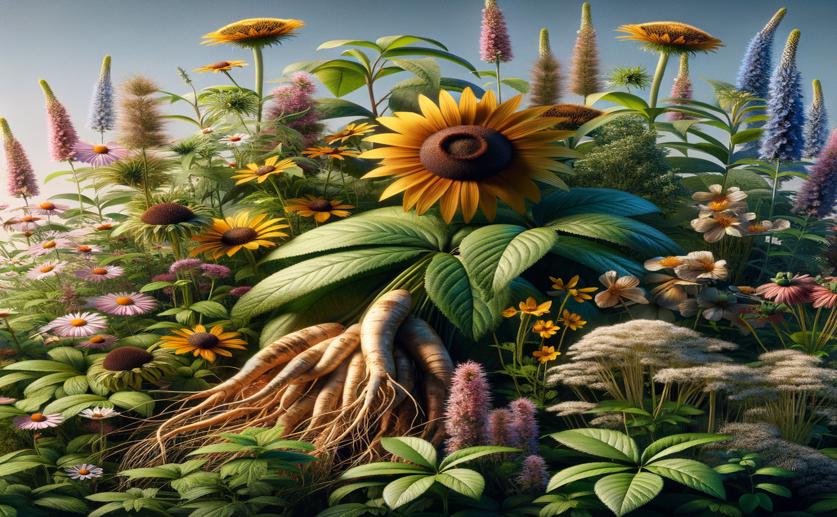Useful Native Plants of North America by Alexander von Humboldt

Image Source: Natural Science News, 2024
Key Findings
- Researchers analyzed Humboldt's "Plantae des États-Unis" manuscript to uncover historical uses of North American plants
- The study identified 28 plant species, noting their traditional uses, including medicinal properties and applications in shipbuilding and tanning
- The findings highlight the suppression of Indigenous knowledge in historical records, emphasizing the need to recognize and preserve this valuable information
The German naturalist Alexander von Humboldt, alongside Aimé Bonpland, conducted an extensive expedition through the American continent from 1799 to 1804. Before returning to Europe, they made a brief trip to the USA between May 20 and July 7, 1804. The most detailed account of this period is encapsulated in Humboldt's manuscript "Plantae des États-Unis" (1804), which documents the uses of various North American plants. A recent study by researchers at the Universidade Federal do Rio de Janeiro (UFRJ)[1] has, for the first time, retrieved ethnobotanical information from this manuscript, shedding light on the historical and cultural significance of these plants and highlighting the erasure of Indigenous knowledge in historical records.
The study meticulously analyzed the digitized version and transcription of "Plantae des États-Unis," extracting information on the plant species mentioned, including their botanical and vernacular names, traditional uses, and general observations. This information was then correlated with data from the Native American Ethnobotany Database and other ethnobotanical literature from the nineteenth and early twentieth centuries, as well as recent pharmacological studies.
The manuscript mentions 28 plant species distributed across 15 botanical families, with the Fagaceae family (oaks) being the most represented. Notably, nine Quercus species were listed, with five identified as particularly useful for cultivation in Europe and three used in ship construction. Four species were noted for their medicinal properties: Toxicodendron radicans (poison ivy), Liriodendron tulipifera (tulip tree), Actaea racemosa (black cohosh), and Gillenia stipulata (Indian physic). Additionally, four species were described as tanning agents, and one species, Hydrastis canadensis (goldenseal), was noted for its use as a yellow dye.
The study's findings highlight a significant issue: the suppression and invisibilization of Indigenous knowledge in historical documents. This aligns with findings from other studies that have documented the underrepresentation and marginalization of women and Indigenous peoples in the history of science[2]. For instance, the work of Maria Sibylla Merian, a female naturalist whose contributions to ethnopharmacology have only recently been recognized, underscores the broader pattern of suppression of marginalized groups in scientific history.
Moreover, the study's focus on the uses of plants for medicinal and other purposes resonates with contemporary research on the ethnopharmacological relevance of traditional knowledge. For example, the study on Nanhaia speciosas, a traditional Zhuang medicine, demonstrates the enduring value of ethnobotanical knowledge in modern pharmacology[3]. Similarly, the research on the interplay between different uses of woody plants in Brazil[4] underscores the importance of understanding traditional practices for sustainable management and conservation.
In conclusion, the study of Humboldt's "Plantae des États-Unis" provides valuable insights into the historical uses of North American plants and highlights the critical need to acknowledge and preserve Indigenous knowledge. This ethnobotanical inventory not only enriches our understanding of historical plant use but also emphasizes the importance of integrating traditional knowledge into contemporary efforts for biodiversity conservation and sustainable management. By recognizing the contributions of Indigenous peoples and other marginalized groups, we can foster a more inclusive and comprehensive approach to the study and use of natural resources.
EnvironmentEcologyPlant Science
References
Main Study
1) Plants of the USA: recordings on native North American useful species by Alexander von Humboldt.
Published 17th September, 2024
Journal: Journal of ethnobiology and ethnomedicine
Issue: Vol 20, Issue 1, Sep 2024
Related Studies
Related Articles





 7th August, 2024 | Jim Crocker
7th August, 2024 | Jim Crocker